Teach students how to manage emotions using healthy coping skills with this interactive scenario game for the early years classroom.
How to Manage Emotions with Healthy Coping Skills
It’s an all-too-common occurrence in primary school classrooms across the globe – the child who lashes out physically because they are overcome with anger; the child who keeps coming up with excuses why they can’t perform their oral presentation; the child who uses unkind words in response to being excluded. If only there was a way to teach our littlest learners how to identify and manage these overwhelming emotions in a healthy and productive manner, rather than causing damage to their peer relationships!
But wait… there IS such a solution! Teach Starter’s extensive collection of emotional awareness resources has been designed by our passionate team of educators for this very purpose!
This digital social-emotional learning resource has been designed to help your students identify productive ways to deal with overpowering emotions using healthy coping skills. Healthy coping skills are those that maintain relationships during times of conflict, rather than causing disconnect and resentment. It uses real-world, age-appropriate scenarios to help your students identify what may be the best course of action. For example:
My friend will not share his toy car with me. What should I do?
- Scream loudly at my friend
- Take deep breaths
If students choose the incorrect answer, they are directed to a slide that explains why the choice made is not a healthy coping skill. If they choose the correct answer, they are directed to a slide that reinforces the healthy coping skill and progresses to the next scenario. The resource includes ten scenarios in total.
The emotions included in this resource are: frustrated, angry, sad, confused, excited, nervous and embarrassed.
If you’re an Office Suite user, you can download this presentation in Microsoft PowerPoint format. Prefer the Google Suite? Just use the dropdown menu to select the Google Slides version of this resource. In both cases, be sure to operate the presentation in Slideshow mode to enable the interactive features.
This resource makes a great addition to your lessons on emotional awareness. By teaching your students to use healthy coping skills when they are emotionally overwhelmed, you are setting them up for a lifetime of strong and emotionally resilient relationships.
Emotion Management Strategies for Kids
As previously mentioned, teaching your students how to recognise emotions in themselves and respond to them appropriately is a skill that will remain with them throughout their lives.
This process does not have to be an arduous or complicated one! Here are a couple of easy steps you can teach and reinforce to your students so that emotional self-regulation comes more easily to them:
- Know Your Emotional Triggers – Knowing what makes us experience a certain emotion is the first step towards becoming more emotionally aware. Have discussions with your students about what their emotional triggers are. You might even like to have your students record these on our My Emotional Triggers Worksheet.
- Tune Into the Body Signs – Knowing how emotions manifest themselves in our bodies is the next key step towards emotional awareness. Explain to your students some of the key body signs that they are experiencing a heightened emotional response. Our How Big Emotions Feel in My Body Poster is the perfect resource to accompany these discussions.
- Choose and Apply a Healthy Coping Skill – Coping skills are like ice cream flavours… we all have our favourites! Help your students trial various coping skills while encouraging them to identify those that are the right ones for them. If they are in need of some ideas, have them peruse our Calm-Down Strategy Cards.
Download This Managing Emotions Game
Use the dropdown menu on the Download button above to access either the Microsoft PowerPoint or the Google Slides version of this resource. (Note: You will be prompted to make a copy of the Google Slides template before accessing it.)
Project the resource onto your screen and work through the slides as a class for a paperless lesson on emotional awareness and healthy coping skills!
This resource was created by Lisamarie Del Valle, a Teach Starter collaborator.
More Resources on Healthy Coping Skills
Looking for more activities to enhance your students’ understanding of healthy coping skills? Explore this great selection of teacher-created resources to get you inspired!
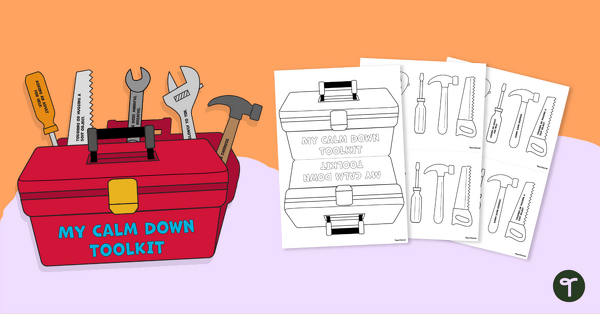
teaching resource
My Calm-Down Toolkit
Help your students calm down when they experience a big emotion with this printable coping skills toolbox template.
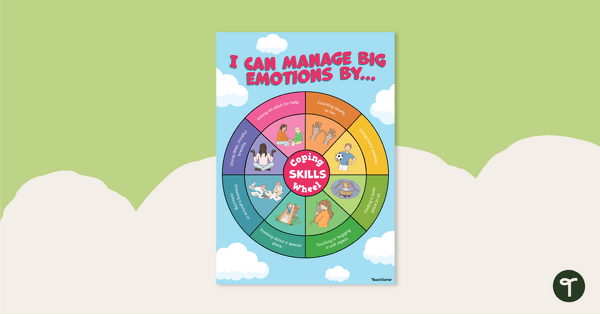
teaching resource
Coping Skills Wheel – Poster
Help your students learn and apply emotional self-regulation skills with this coping skills wheel of choices poster.
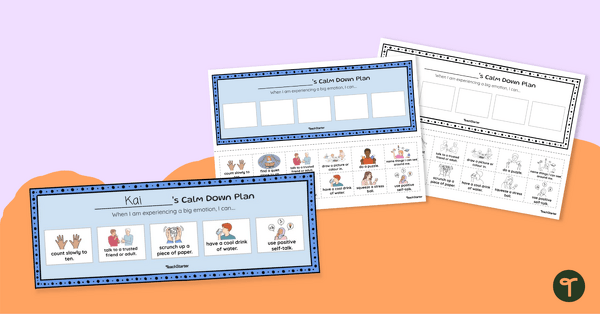
teaching resource
Coping Skills Desk Plates
Download and print calm-down strategy desk plates for your students so they can respond appropriately to big emotions.
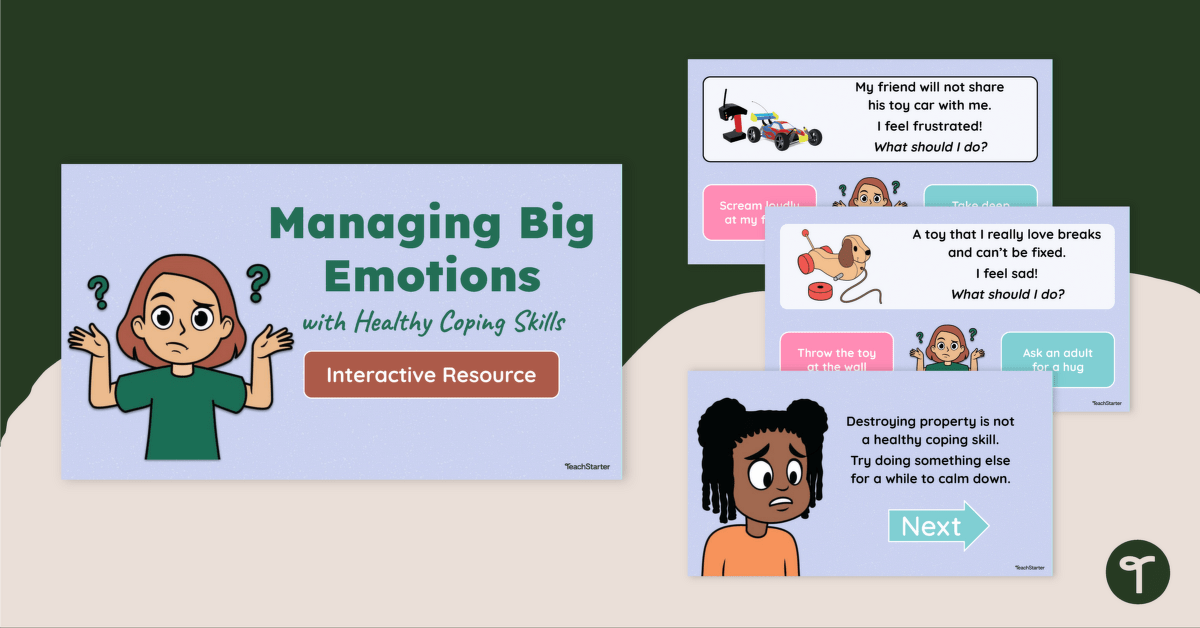


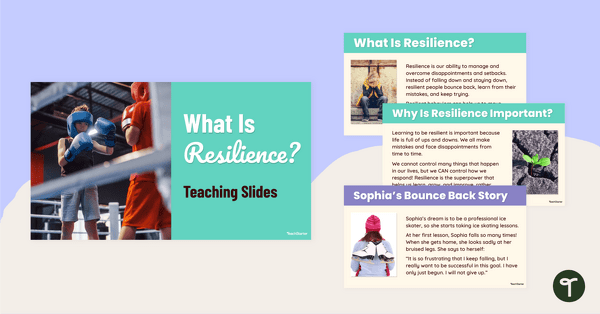
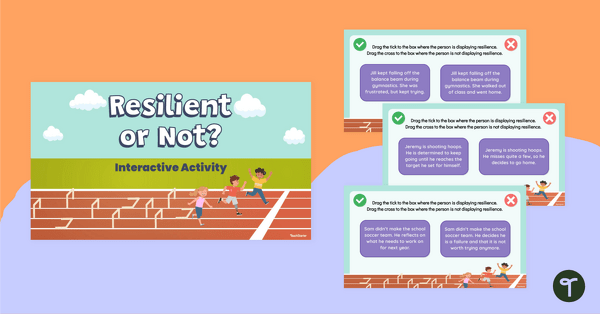
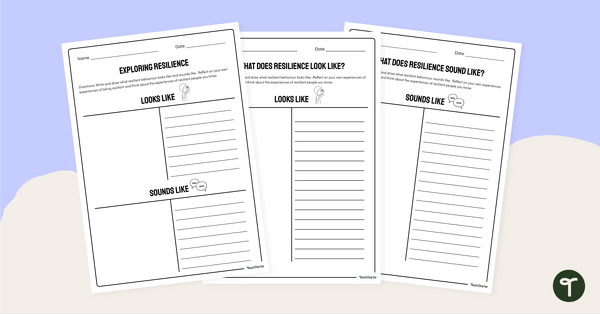
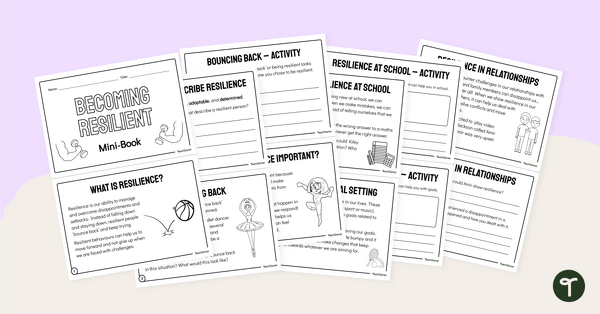

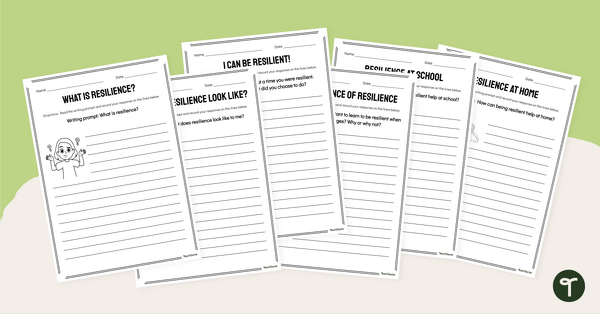
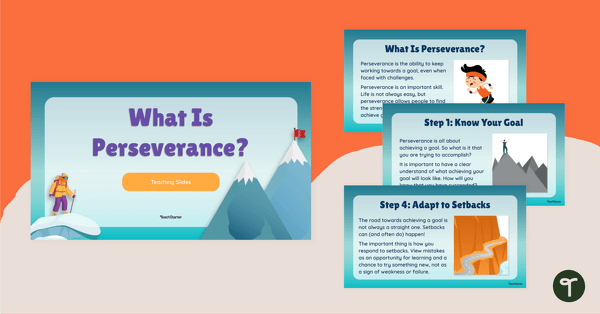


0 Comments
Write a review to help other teachers and parents like yourself. If you'd like to request a change to this resource, or report an error, select the corresponding tab above.